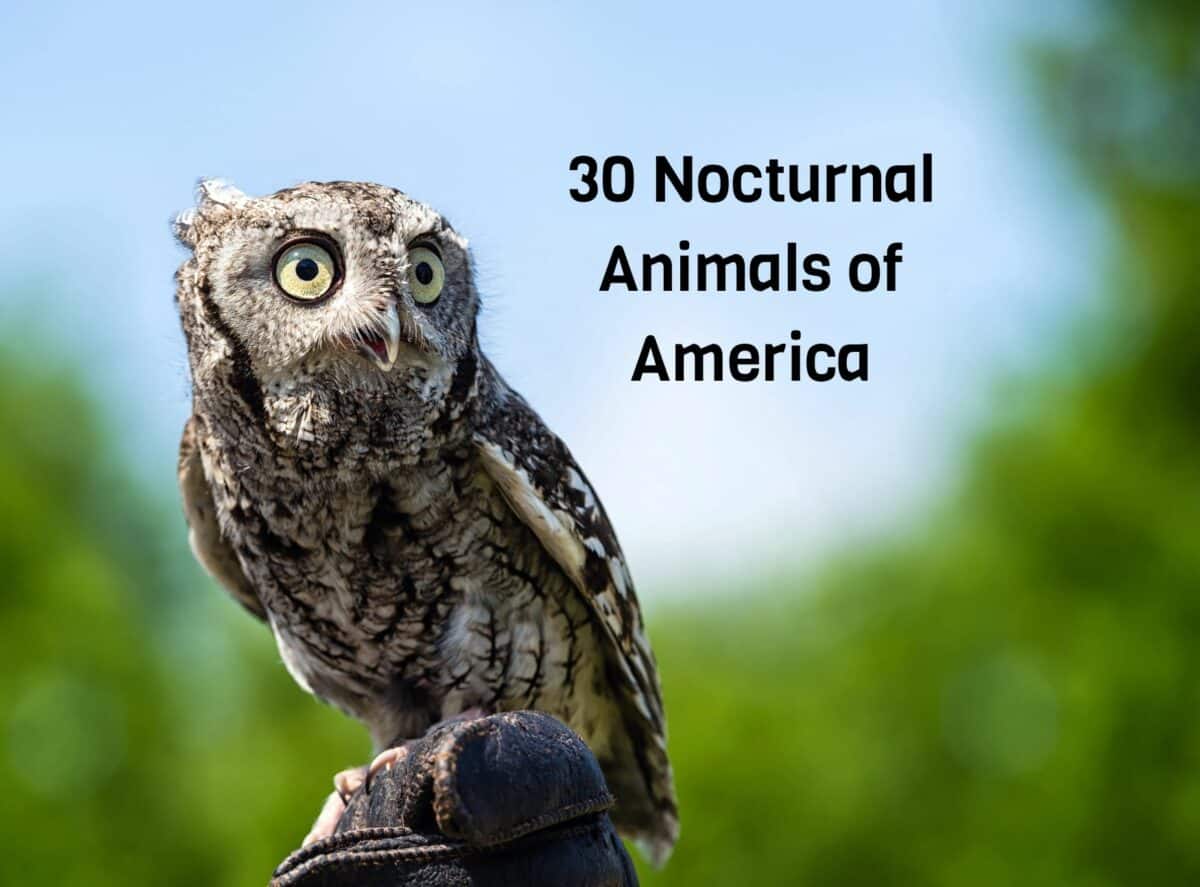Welcome to the world of nocturnal animals in America! The United States, also known as America, boasts a wonderful variety of wildlife, with many reserves and parks dedicated to maintaining natural habitats and creatures. While most animals begin to stir in the early morning, you can also find an array of nocturnal creatures.
Nocturnal animals are naturally night skies, with some of them usually coming out at night to escape the day’s scorching heat. Where others come out at night to hunt, mate, or avoid predators. So, heading outside after dark on America’s streets can turn up a surprising number of animals.
Keep reading to learn about thirty nocturnal animals you might encounter in America.
1. Great Horned Owl
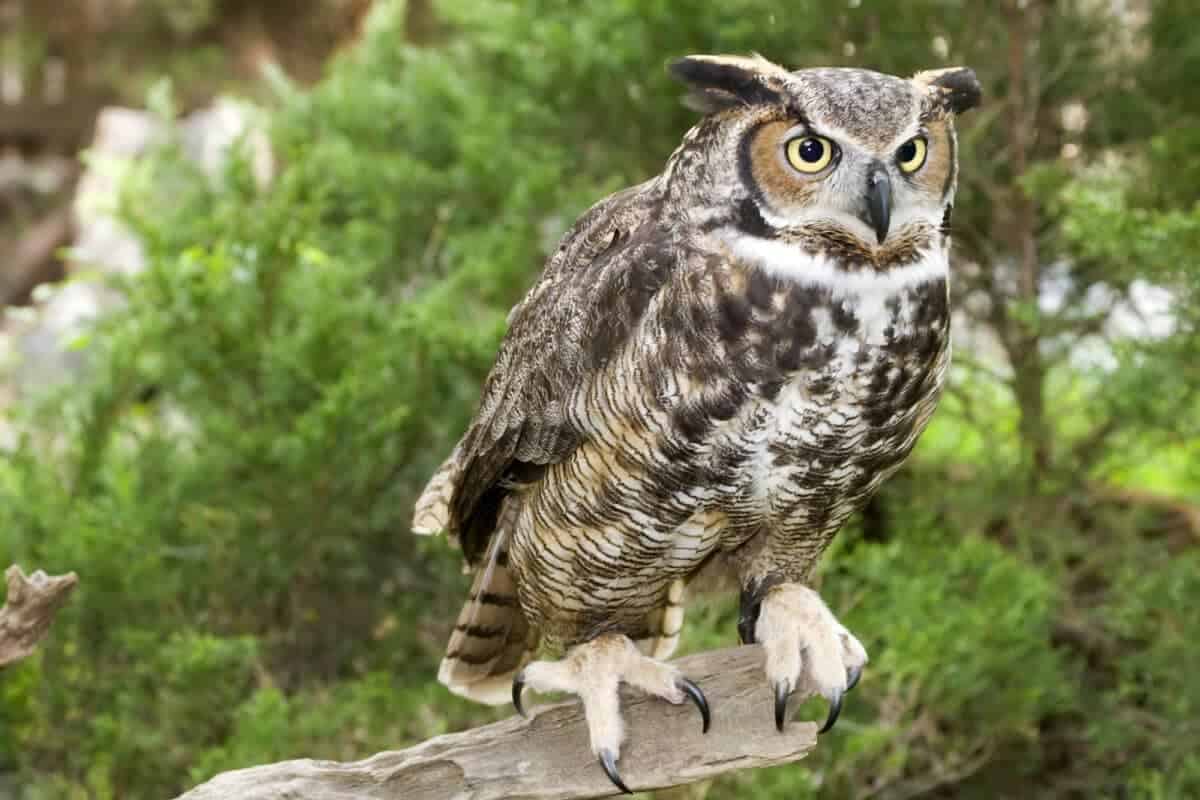
The great horned owl, also famous as the hoot or tiger owl, is a large owl inhabiting America. Adult great horned owls are mottled gray-brown with reddish faces and have large yellow eyes with prominent feature tufts in their heads. They usually feed on rabbits, hares, mice, and rodents.
2. Coyote
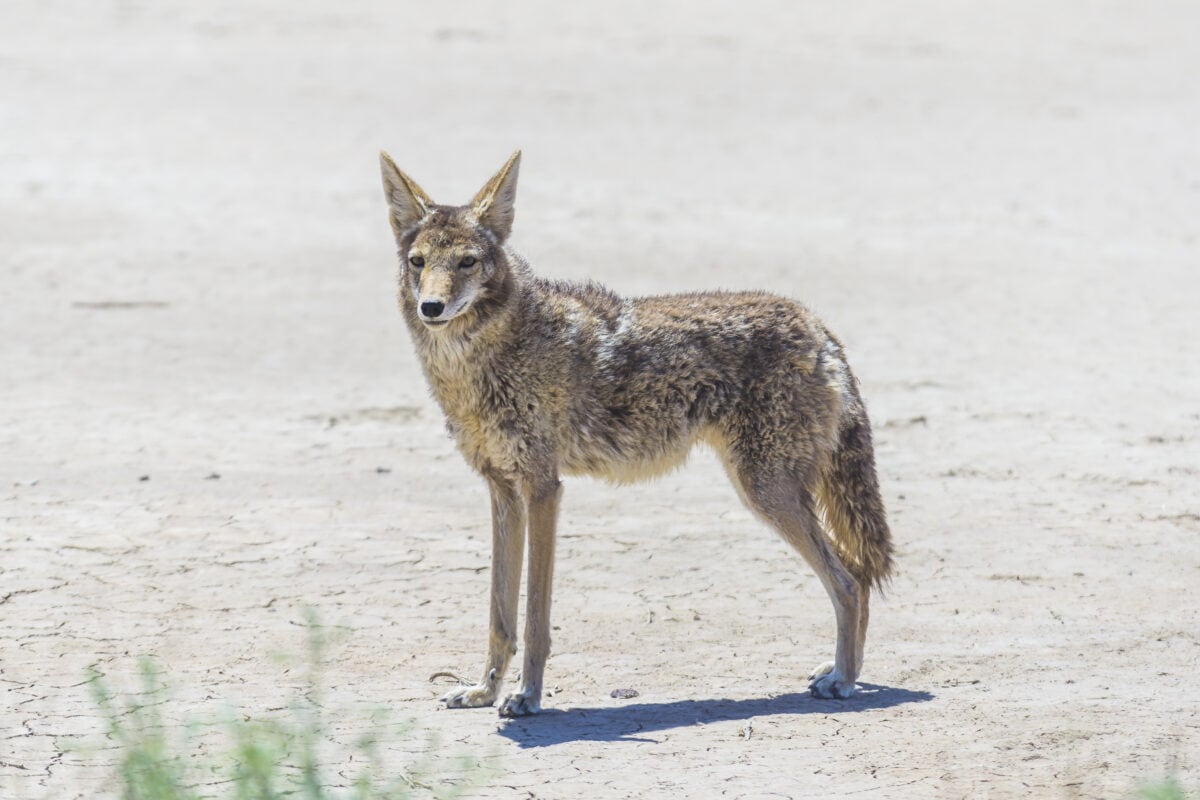
Scientifically known as Canis latrans, coyotes can be spotted in the daytime but prefer to go out after dark. Inhabiting various environments, including mountains, forests, deserts, and even cities across America, you can hear them echoing howls and yips after nightfall. Indigenous to the North, coyotes are grayish with a yellow-brown top and white underparts.
3. American Red Fox
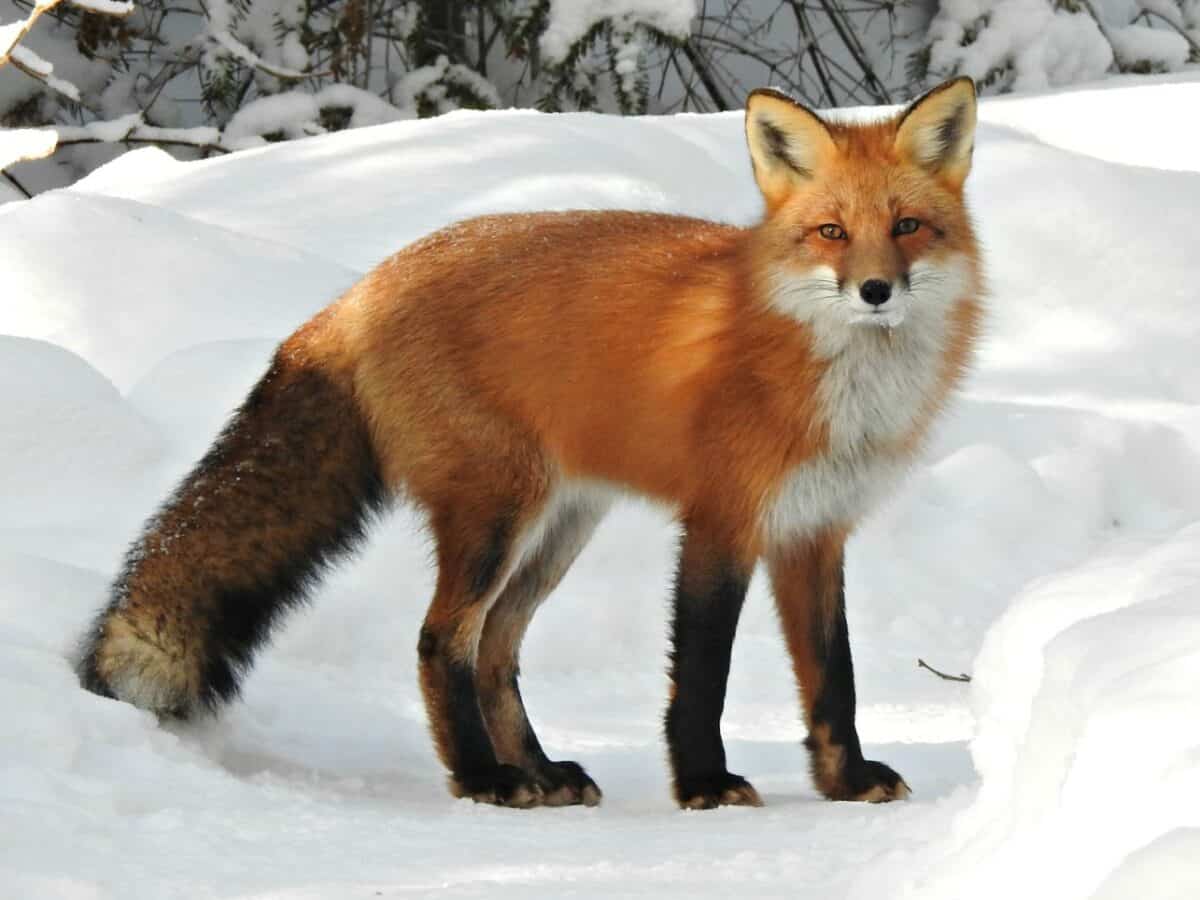
A sub-species of the red fox, American red foxes, is another common nocturnal animal native to America. Some tribes in America describe these creatures as coyotes, while others see them as noble, judicious messengers. These three feet long, two feet tall, exceptionally smart, and quick-moving creatures can be spotted commonly in the eastern USA.
4. Common Nighthawk
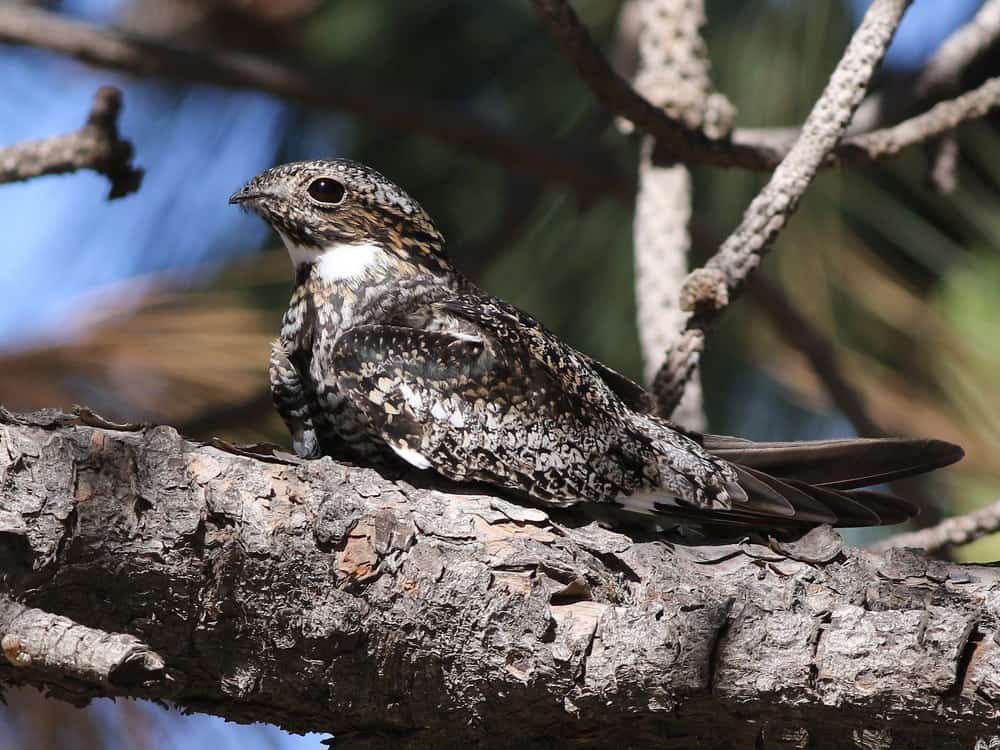
Common Nighthawks, scientifically known as Chordeiles minor, are camouflaged gray, buff, white, and black. These animals have short legs, tiny bills, flat heads, and noticeable white patches near the bends of their wings. They look odd but are among the most interesting nocturnal birds in America. They are sometimes called bullbats due to their awkward, erratic flapping wings that make them appear like bats.
5. Southern Flying Squirrel
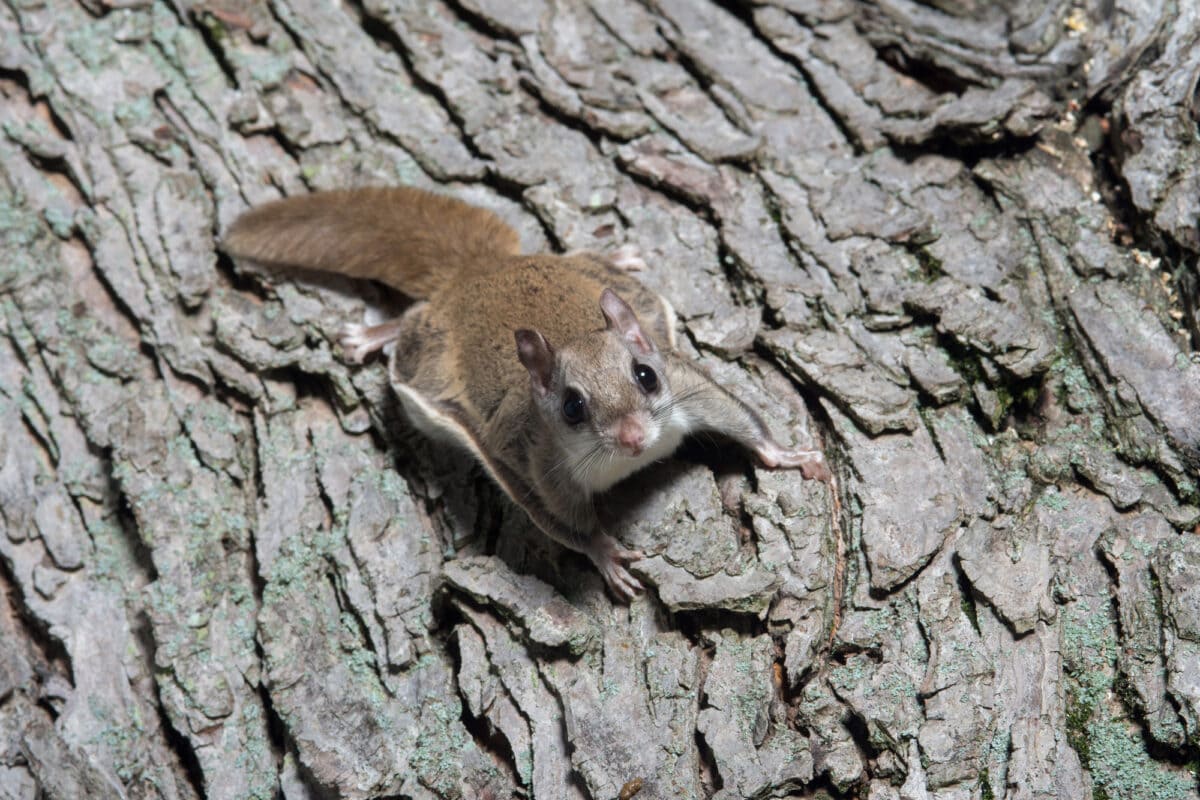
Glaucomys Volans, or southern flying squirrels, feature reddish-brown or gray fur with large black eyes and white bellies. You might find these little squirrels as the cutest nocturnal creatures in America. These animals are usually found in deciduous and mixed woods in eastern North America. They are smaller than the northern flying squirrels and can be approximately seven to ten inches long.
6. Nine-Banded Armadillo
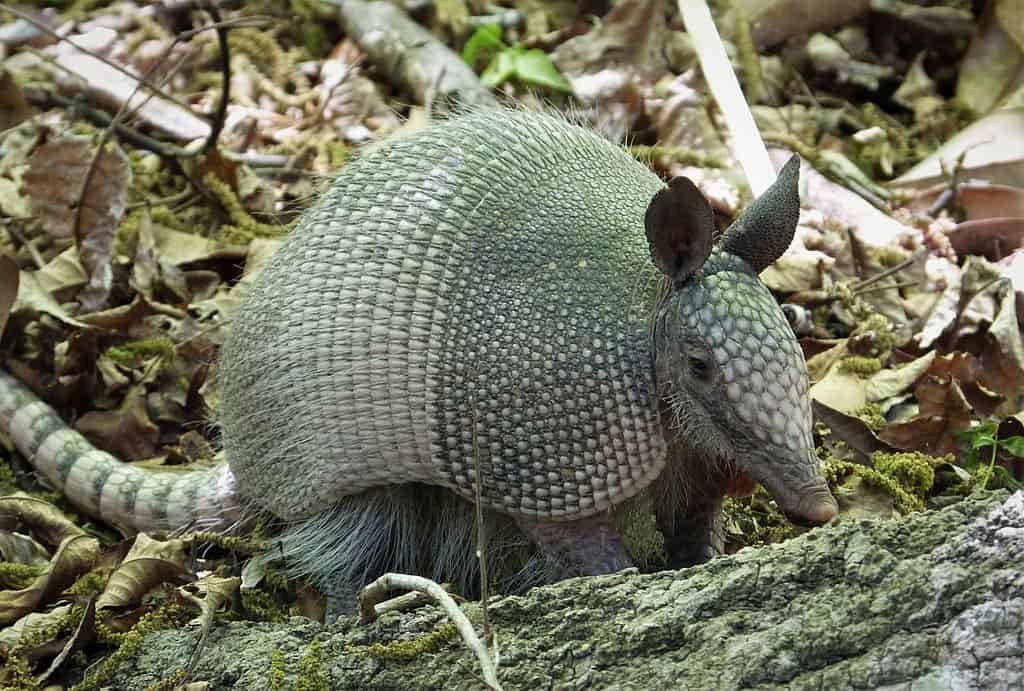
The back, head, tail, sides, and outer legs of a nine-banded armadillo or Dasypus novemcinctus are covered in bony, armor-like plates connected by flexible skin bands. These nocturnal creatures of America have tough skin with coarse hair covering the underside. Moreover, nine-banded armadillos have a unique reproduction system, with the zygote splitting into four identical quadruplets every time they get pregnant.
7. White-Tailed Deer
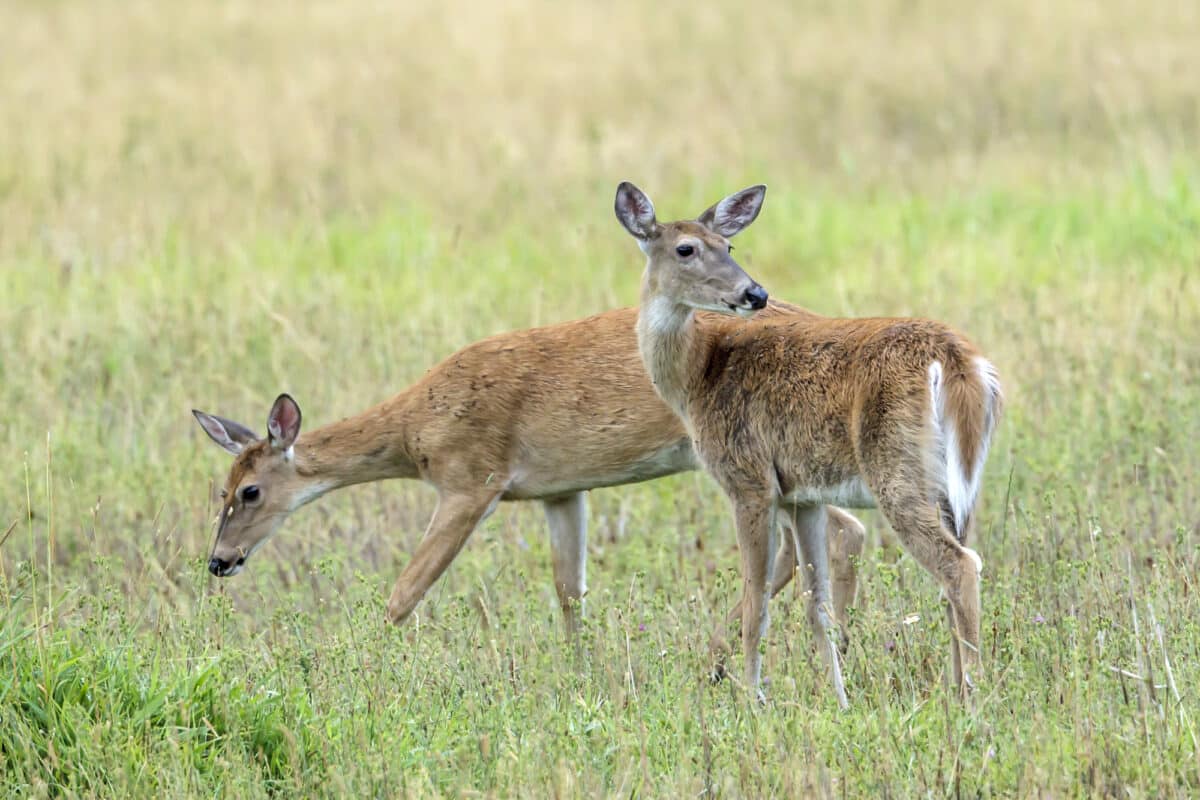
Odocoileus Virginianus, or white-tailed deer, is tan or brown during the summer and grayish during the cold months, with a white throat, chest, and tail underside. The male white-tailed deer have antlers that they shed during cold months. Having an extensive range in Northern America, they can thrive in various habitats, from mixed, coniferous, and deciduous forests to hammock swamps, thorn brush desserts, and sawgrass.
8. Racoon
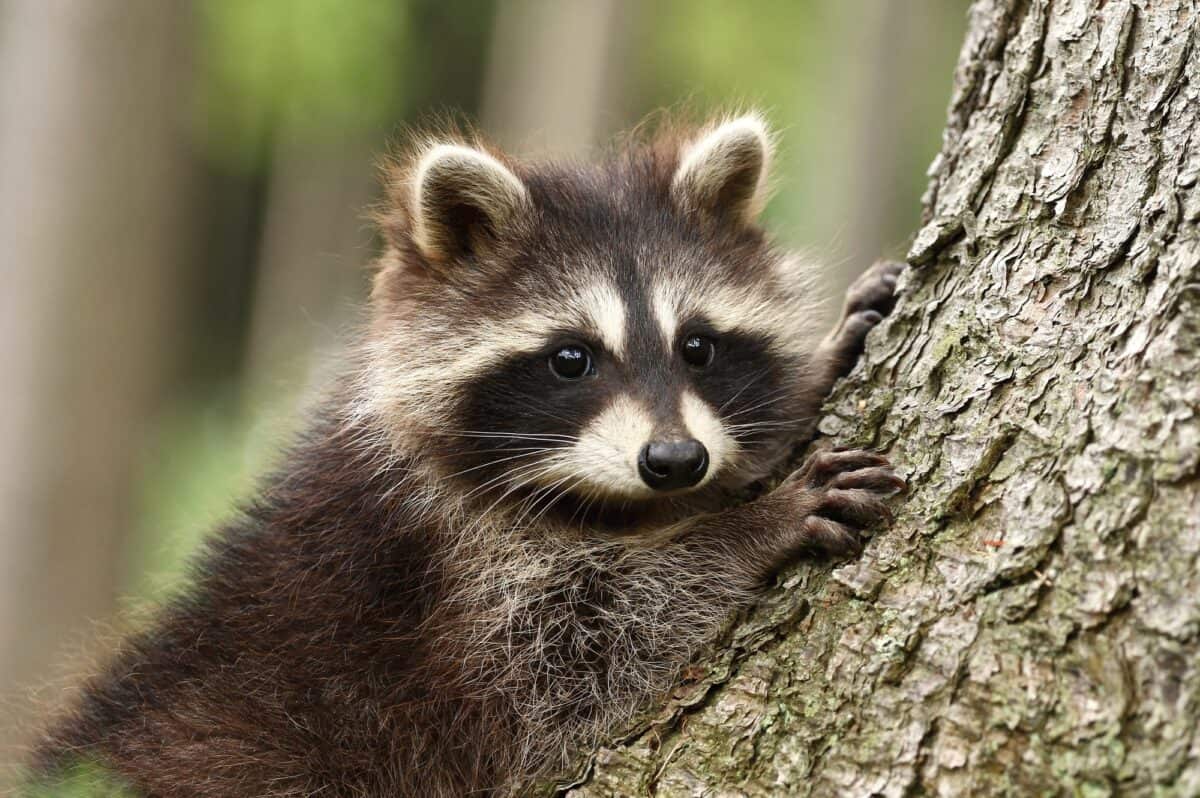
Scientifically named Procyon lotor, the Raccoon is a curious creature and famous for causing trouble. Having grayish-brownish fur with four to six rings on their tail and a black mask marking around their eyes, they will do anything to find something to eat. Moreover, raccoons have bushy tails and paws with long, finger-like toes.
9. Big Brown Bat
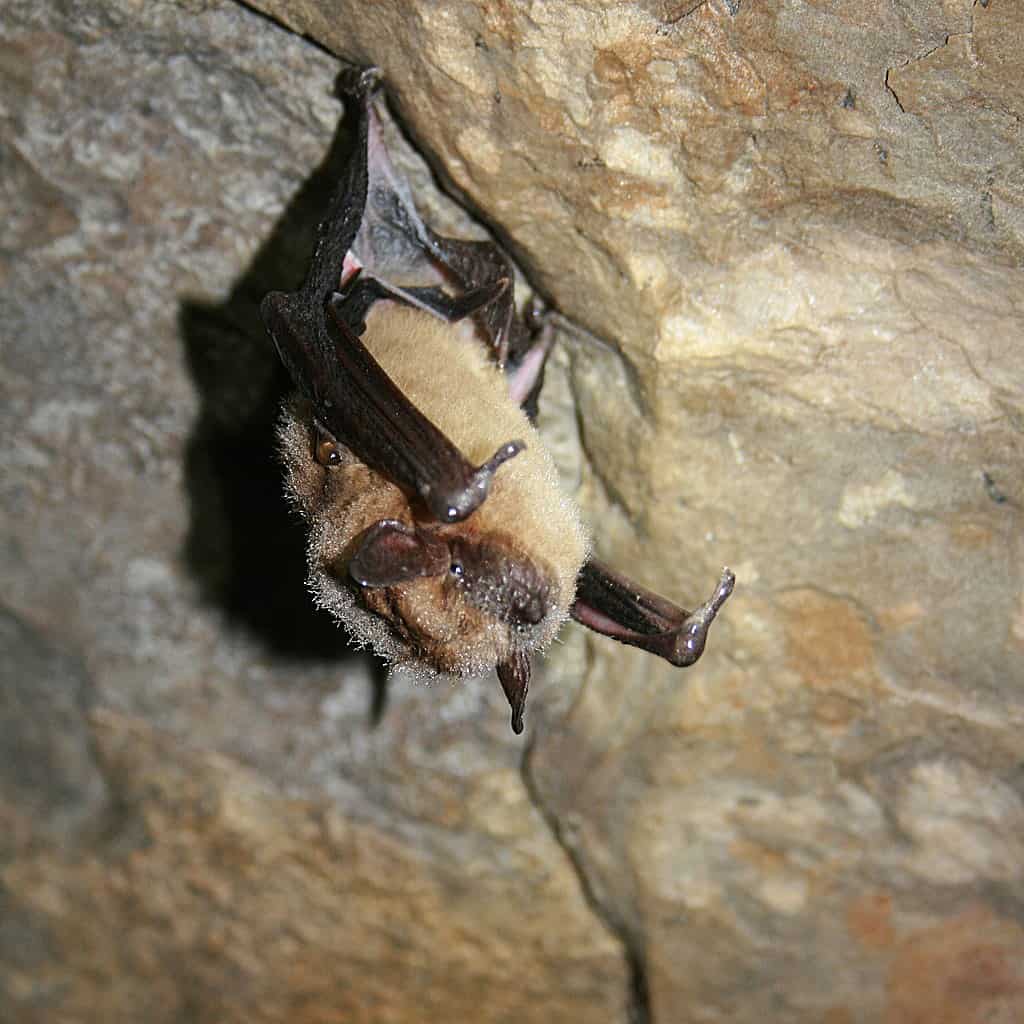
The larger-sized brown bats can have an approximately 12-inch wingspan. They are scientifically named Eptesicus fuscus and have brown fur with black feet, eras, and wings. Big brown bats’ most unique feature is their hairless wings. Although big brown bats primarily thrive on insects, especially those flying at night, they prefer eating beetles.
10. Cougar
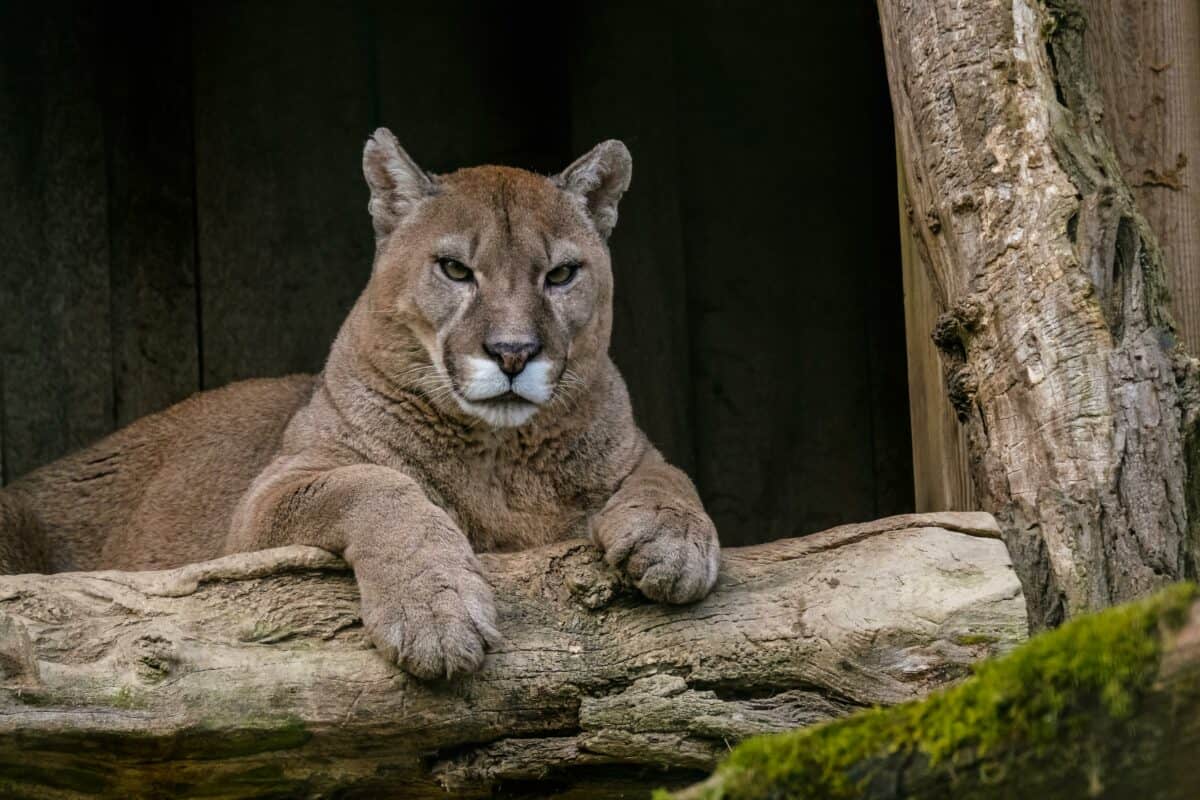
Cougars are one of the largest nocturnal animals in America, ranging from tawny or gray to reddish-brown, with their tail having a black tip. They have round heads, powerful forequarters, and pointed ears. These animals boast athletic ability because of their large hind legs and massive paws. Cougars can sprint at 50 miles per hour and jump 15 feet high.
11. Bobcat
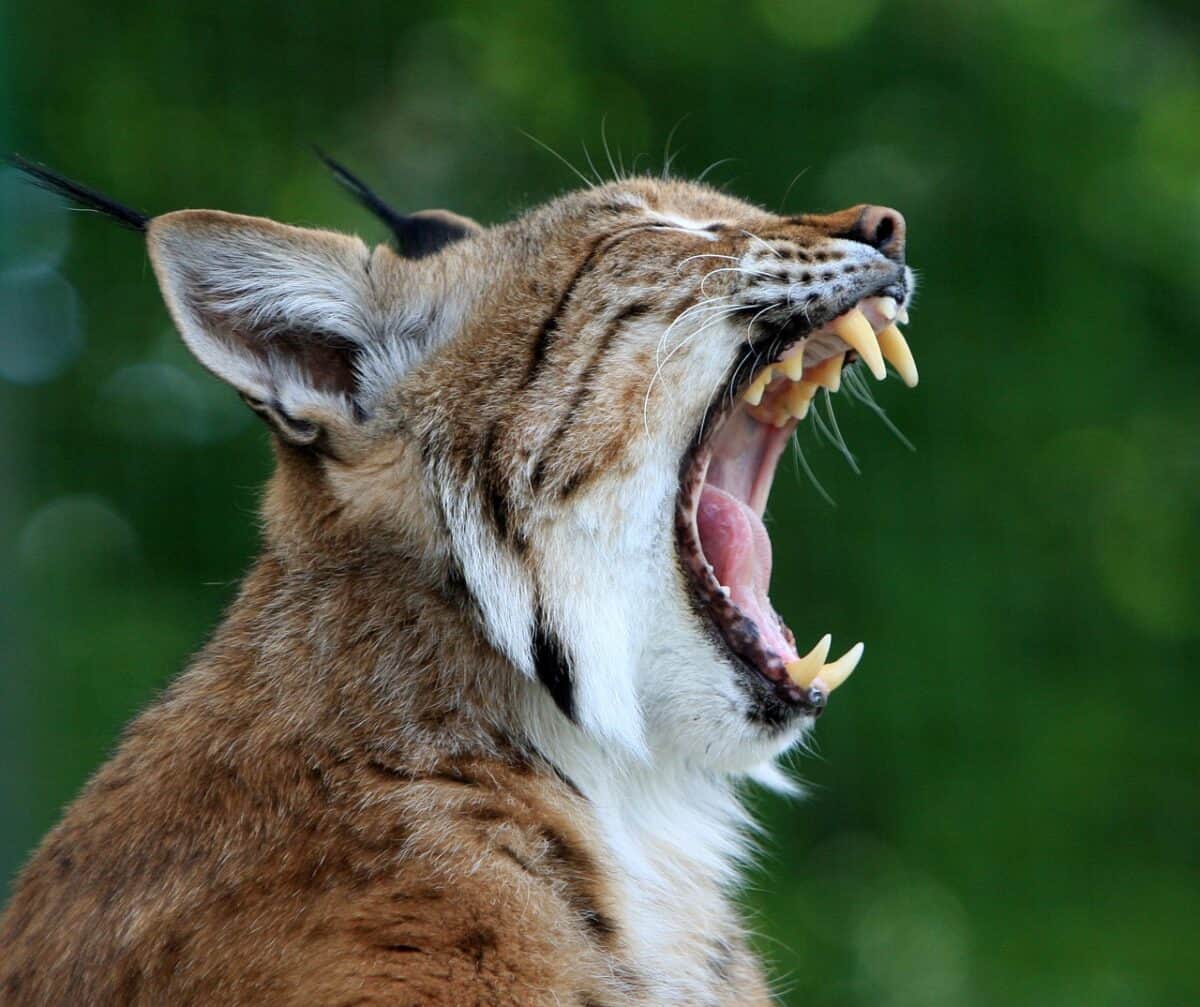
Lynx Rufus, or bobcats, can be in a buff or brown color, with some having a reddish tint and brown and black spots and stripes. Moreover, they have ear tufts, facial ruffs, short, bobbed tails, and white spots. Known as highly skilled hunters, they can run or climb up to 30 miles per hour and leap high enough to capture low-flying birds.
12. Barred Owl
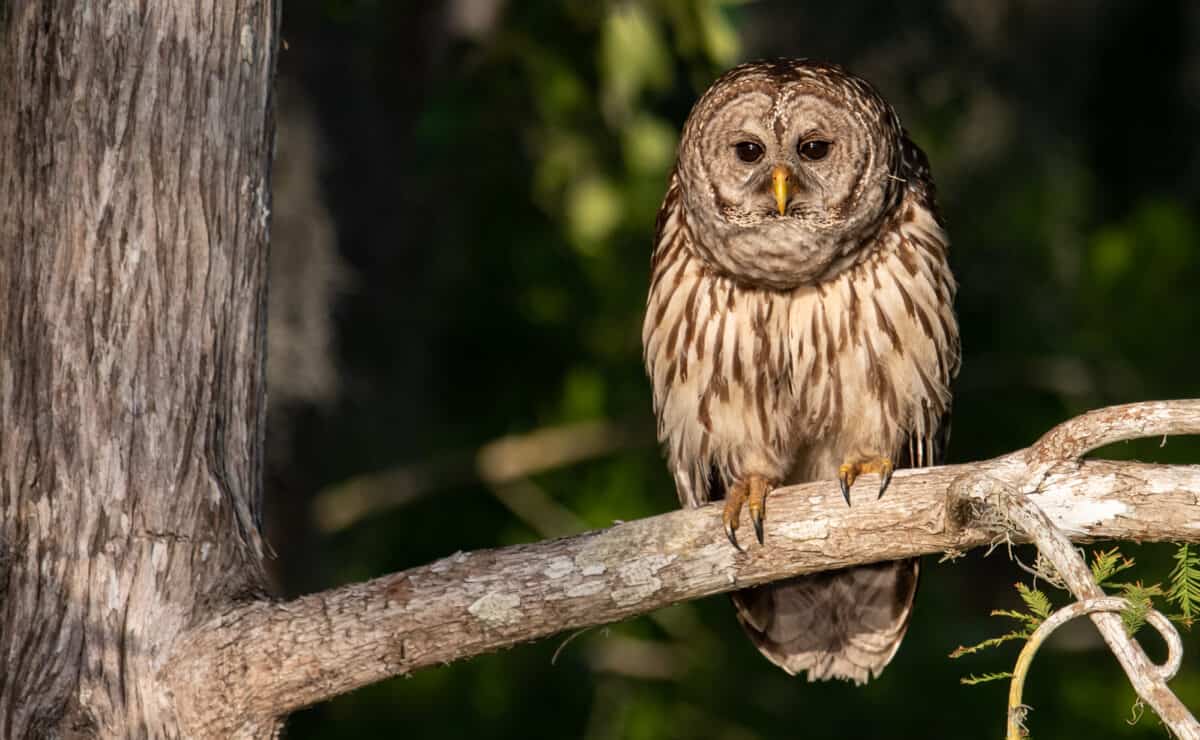
Barred owl adults have mottled brown and white skin with large, dark eyes, rounded faces, and yellow bills. Also known as hoot owl or Strix varia, it is named barred owl because of the horizontal stripes of alternating dark and light brown on the back, tail, and wings. They primarily feed on mice and other small rodents.
13. Striped Skunk
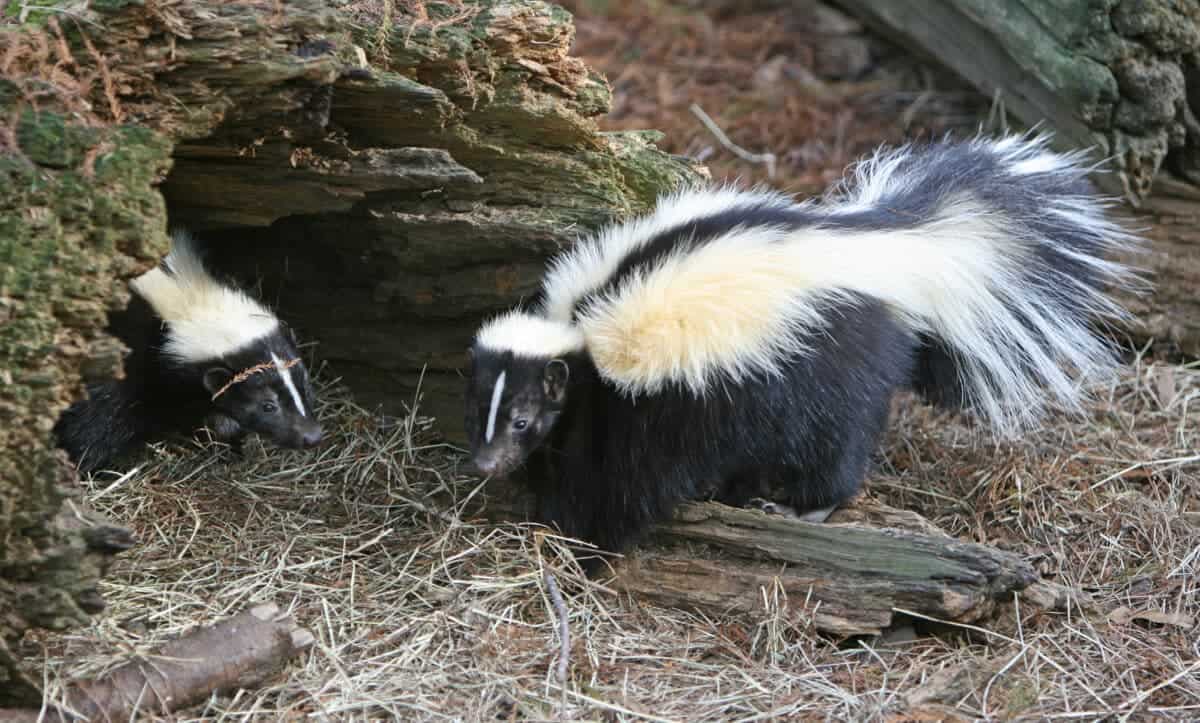
Striped skunks are black, with a thin white stripe running from the snout to their forehead and two thick white stripes on their back and tail. Besides this, they have small triangular heads, black eyes, short ears, and a bushy black tail. These nocturnal creatures are famous for their unusual defense mechanism. They first stomp on their feet or handstands as a warning whenever they feel threatened.
14. American Bullfrog
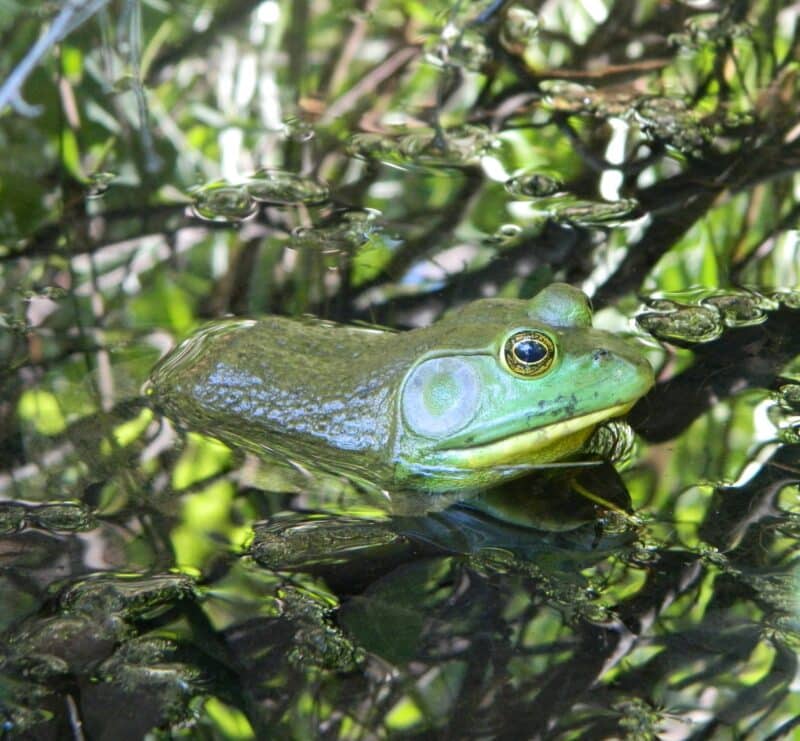
The coloration of American bullfrog is usually olive green, with some having brown or gray mottling or spots. In addition, Lithobates Catesbeianus have fully webbed back feet and can weigh as much as 1.5 pounds. You can find these nocturnal animals in permanent water bodies, including ponds, lakes, and swamps. They survive by preying on small birds, other frogs, insects, fish, turtles, and worms.
15. Virginia Opossum
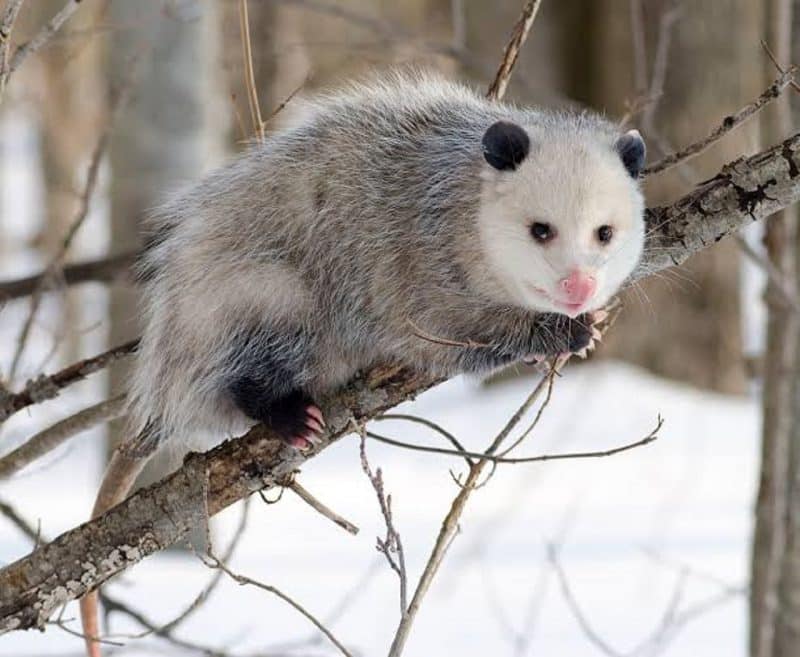
Didelphis virginiana, or virginia opossum, is the only marsupial in North America. They feature whitish fur underneath and dull grayish-brown fur on top, with colors varying throughout their range. Moreover, their face is white, and they have hairless tails and feet with opposable thumbs. These animals usually prefer living in forests and thickets near a water source.
16. American Badger
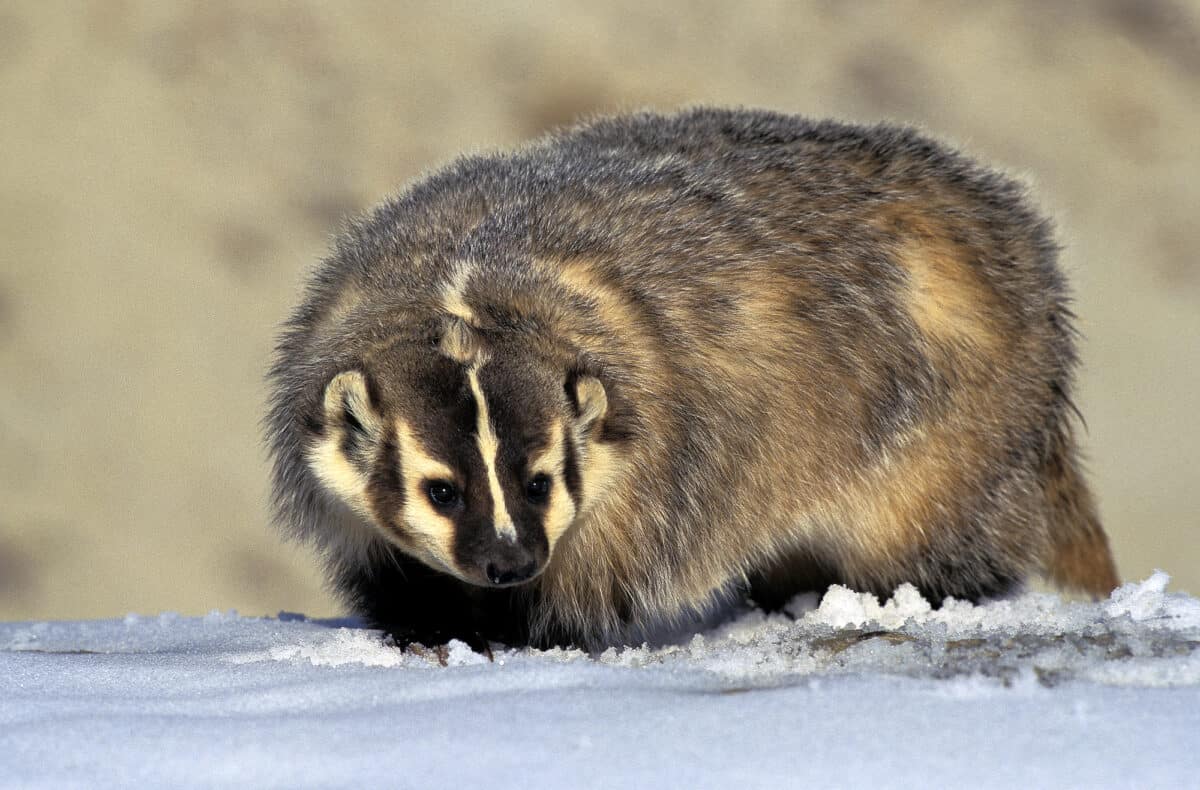
The American badger is an intimidating nocturnal creature with long brown or black fur, one white stripe running from the nose to the head’s back, and white stripes on the cheeks. They have large, flat bodies, triangular faces, long, sharp claws, small ears, and powerful legs. Taxidea taxus spend the nights using their strong claws to dig prey out of caves.
17. Speckled King Snake
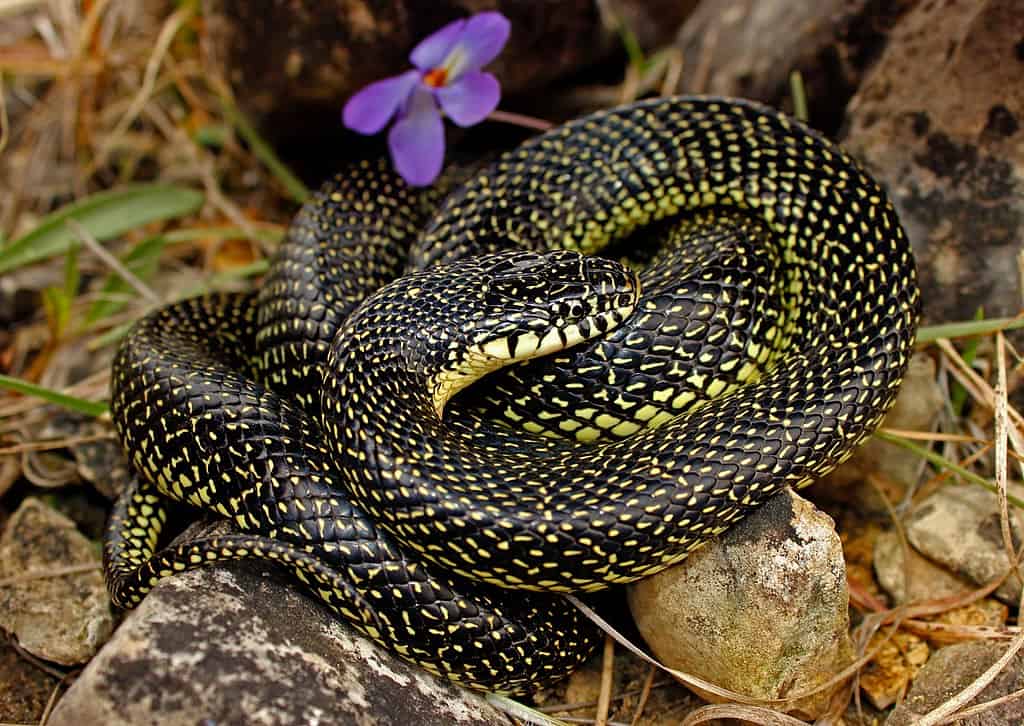
The speckled king snake, scientifically called Lampropeltis Holbrooki, is shiny black and has small yellow, white, or yellowish-green specks, one in the center of the dorsal scale. Because of their unique appearance, speckled kingsnake is nicknamed ‘salt and pepper snakes’. Now that they are secretive, nocturnal species, it can be tough to spot them.
18. Eastern Cottontail
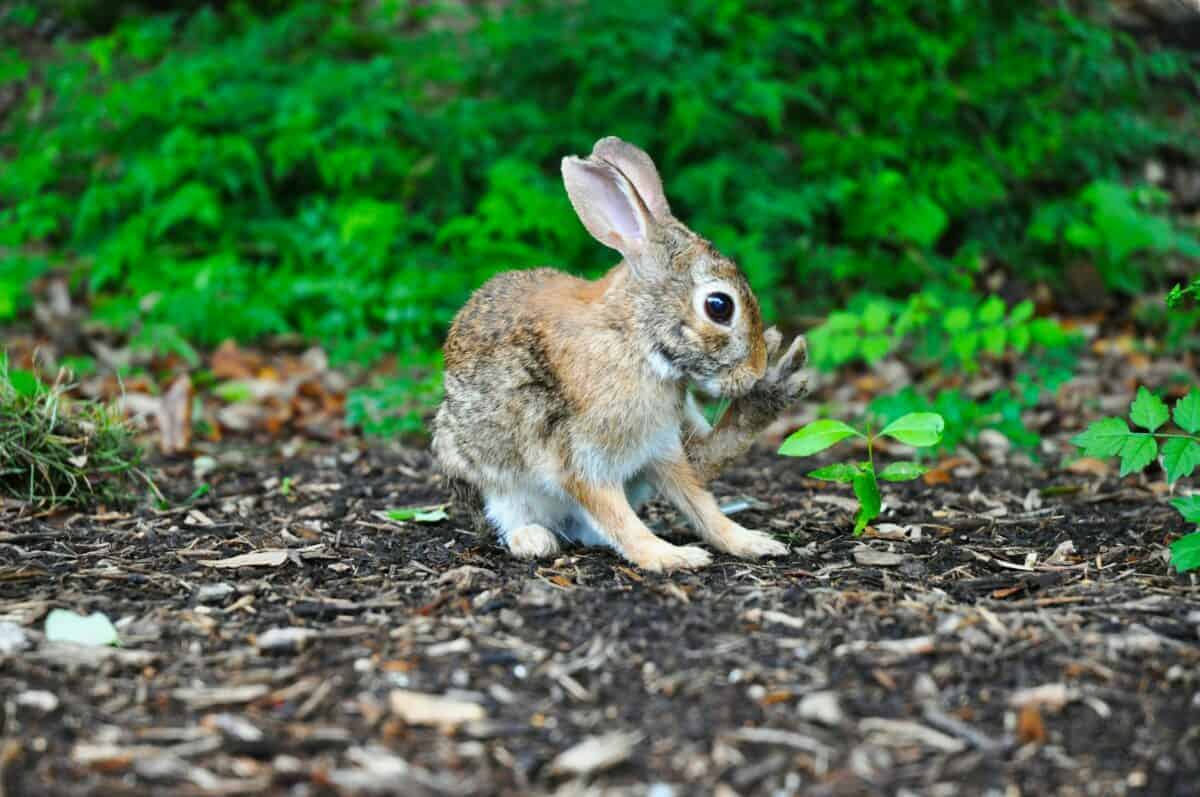
With a reddish-brown upper body and white underparts and tail, the eastern cottontail has a round, fluffy tail and distinctive, large eyes. Scientifically called Sylvilagus floridanus, they are vulnerable to many predators in America and, thus, live in a habitat with good covers, like dense shrubs, thickets, brush piles, and blackberry bushes.
19. Plains Leopard Frog
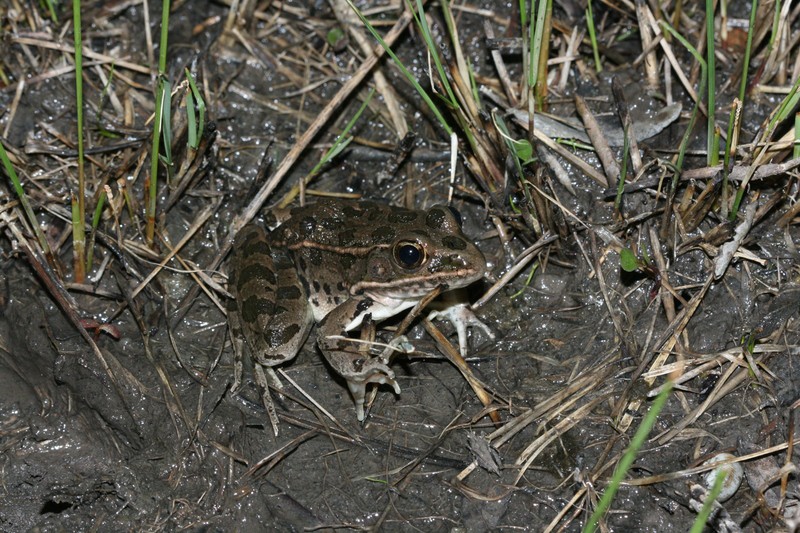
Lithobates Blairi, or plains leopard frog, is tan or light brown and covered with greenish or brownish spots. In addition, their upper jaw has a white line, and lighter ridges run down the sides of their back. You can find these nocturnal creatures in permanent water bodies, including creeks, streams, ponds, and marshy regions.
20. Spring Peeper
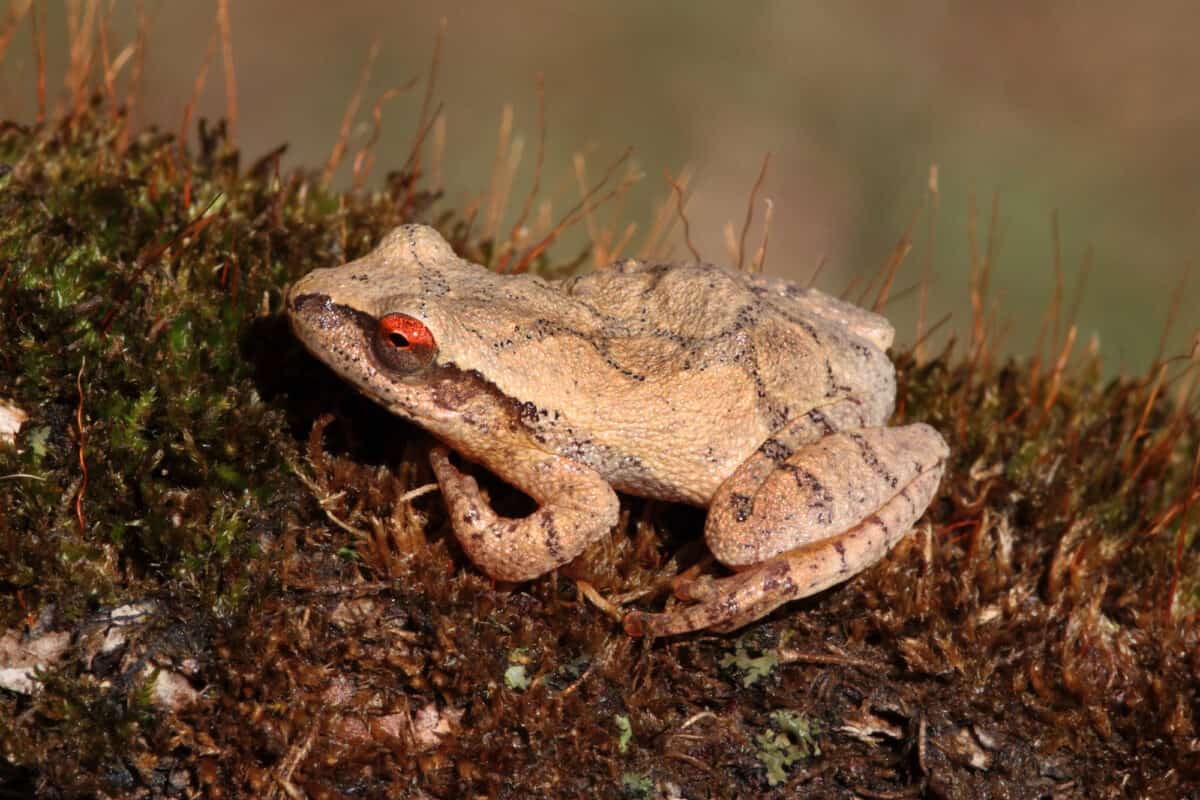
Typically covered in tan or brown colors, with the females in lighter colors, spring peepers usually feature a darker cross on their back. Pseudacris crucifer are called spring peepers because of their distinctive nighttime spring chorus. They can be commonly found on the forest floor among the leaves. Moreover, they can climb trees using their large toe pads.
21. Ringtail
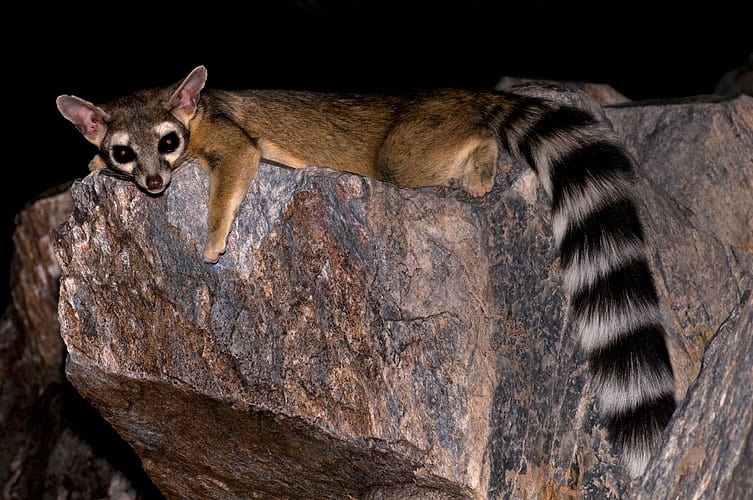
Ringtail, or Bassariscus astutus, features a cat-like body in pale tan color with a pale buff on its underside and a dark brown wash on its upper parts. Moreover, they have a fox-like face, large oval ears, and a bushy tail with black and white rings. Also known as miner’s cats, they belong to the raccoon family.
22. Gray Tree Frog
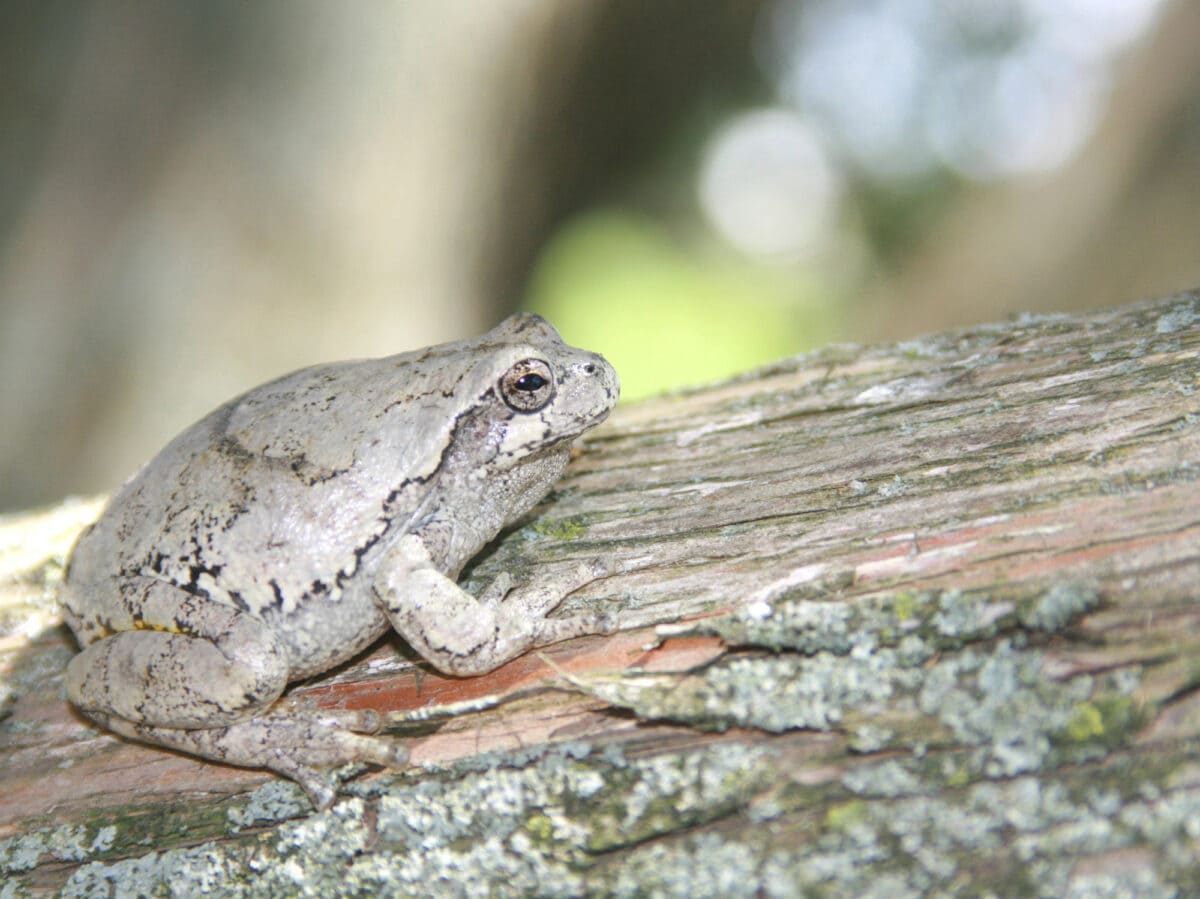
The adult body of a gray tree frog, or Bryophytes versicolor, can be 1.5 to 2 inches long. They are in mottled gray, brown, and green colors, with a whitish spot under each eye. Moreover, these nocturnal animals have short snouts and bumpy skin with orange undersides of their legs. They can slowly change colors to match what they are sitting on to camouflage themselves.
23. Eastern Red Bat
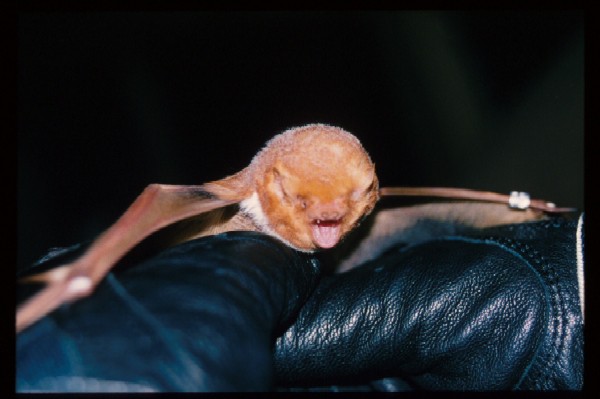
The medium-sized tree bat, the eastern red bat, has thick, long fur and short, round ears. Males Lasiurus borealis have distinctive rusty red fur, and females have a soft shade of red fur. They often roost hanging using a single foot to twist their body slightly in the breeze. This position makes them look like a dead leaf.
24. Eastern Screech-Owl
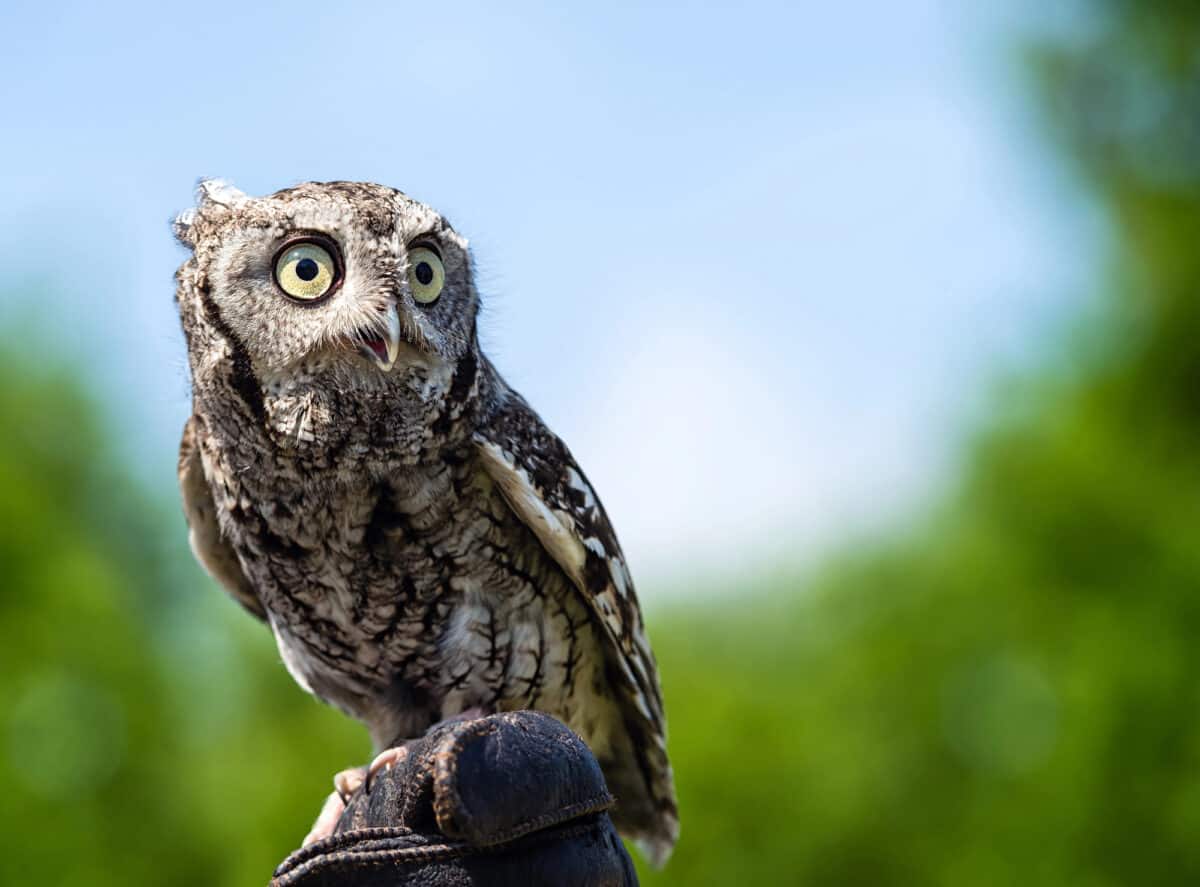
Scientifically called Megascops Asio, the eastern screech owl is either found in a gray or reddish-brown color. They are small, stocky owls with almost no necks and ear tufts. You can mostly find these short, stocky owls in almost any wooden area. These nocturnal animals make various hoots and calls, but their even-pitched trill, tremolo, is the most popular.
25. Northern Flying Squirrel
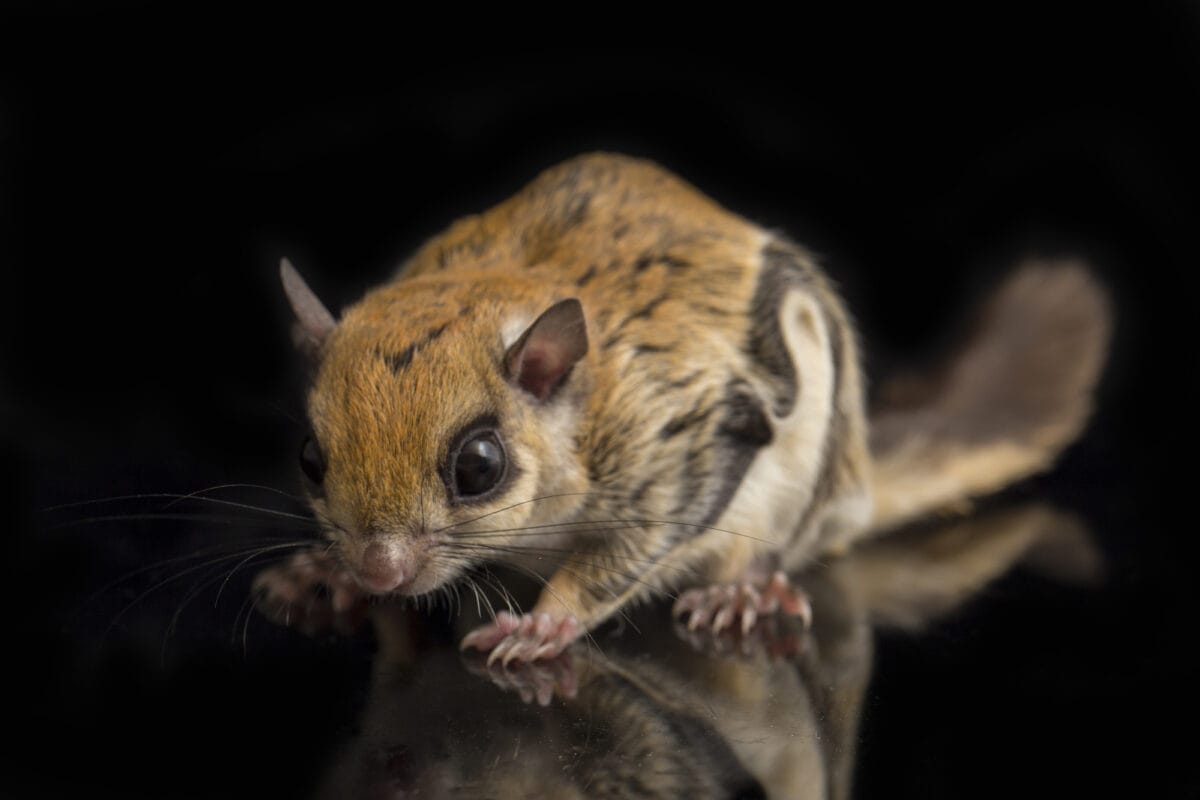
One of three species of the genus Glaucomys, the scientific name of the northern flying squirrel is Glaucomys sabrinus. These nocturnal animals inhabit coniferous and mixed coniferous forests across the southern mountains of North Carolina, western Utah, Alaska, and Nova Scotia in the United States. They have cinnamon or light brown fur with pale underparts, huge black eyes, flat tails, and can grow to 10 to 15 inches long.
26. Humboldt’s Flying Squirrel
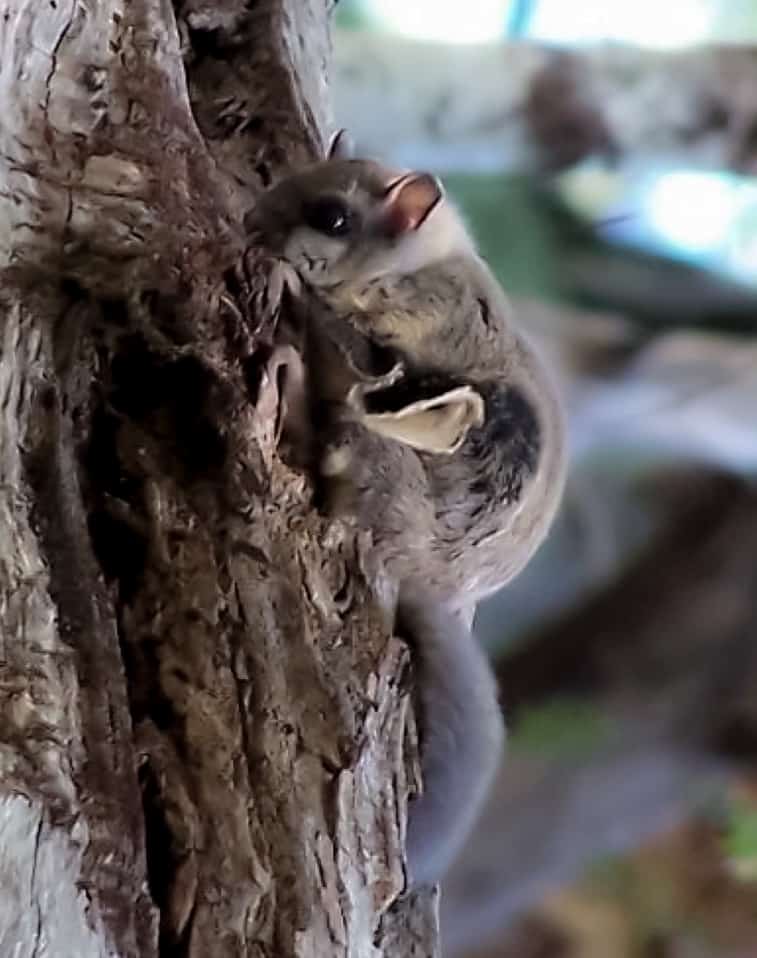
Humboldt’s flying squirrel, or Glaucomys Oregonensis, usually has dark gray or gray-brown fur with large black eyes, a pale underside, and a flat tail. These nocturnal creatures are a new species to be found in America, especially in northern California. Overall, Northern and Humboldt’s flying squirrels look the same, but the latter has a slightly smaller frame and somewhat darker fur.
27. North American Porcupine
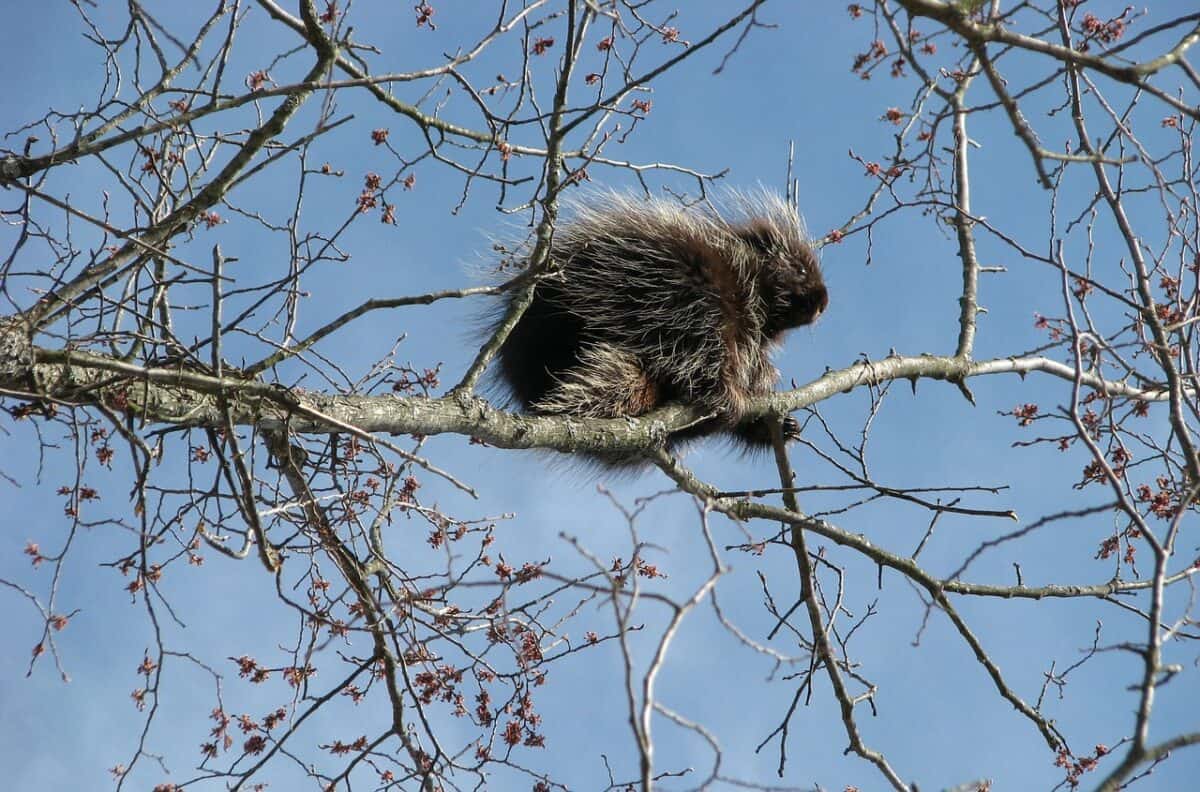
The second-largest rodent in North America, Erthizon Dorsatum or North American porcupine’s fur can vary from black to brownish-yellow, with white highlights on their quills. In addition, these nocturnal animals are covered in around 30,000 hollow quills. When they feel threatened, North American porcupines draw up the skin of their back so that their quills face all directions.
28. Mexican Free-Tailed Bat
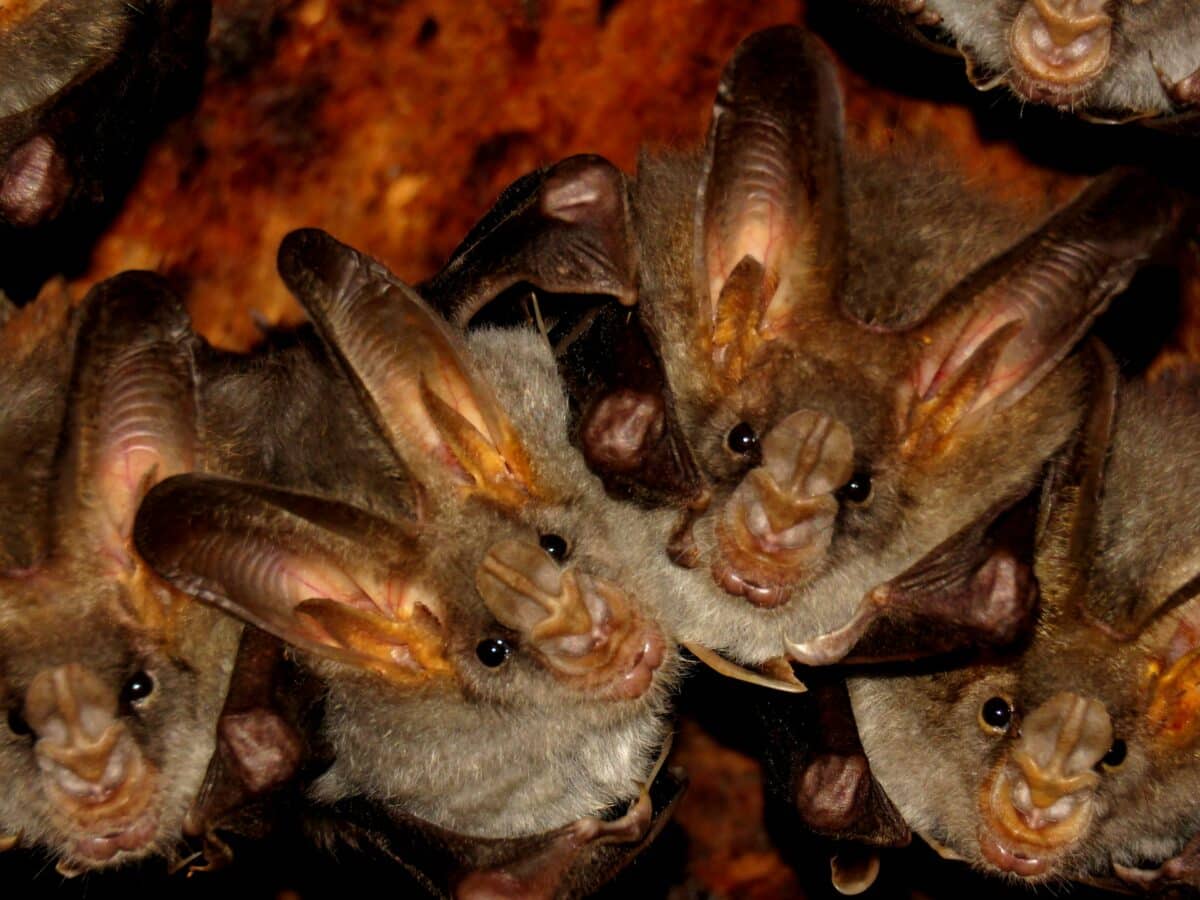
These smaller but fastest bats feature gray fur on the front and back, with light black faces, ears, legs, and wings. Tadarida brasilienis, or Mexican free-tailed bat, have short and rounded ears, with lines inside and ruffled on the bottom. Moreover, their narrow wings are elongated with pointed tips, helping them fly quickly enough to catch their flying prey.
29. Western Spotted Skunk
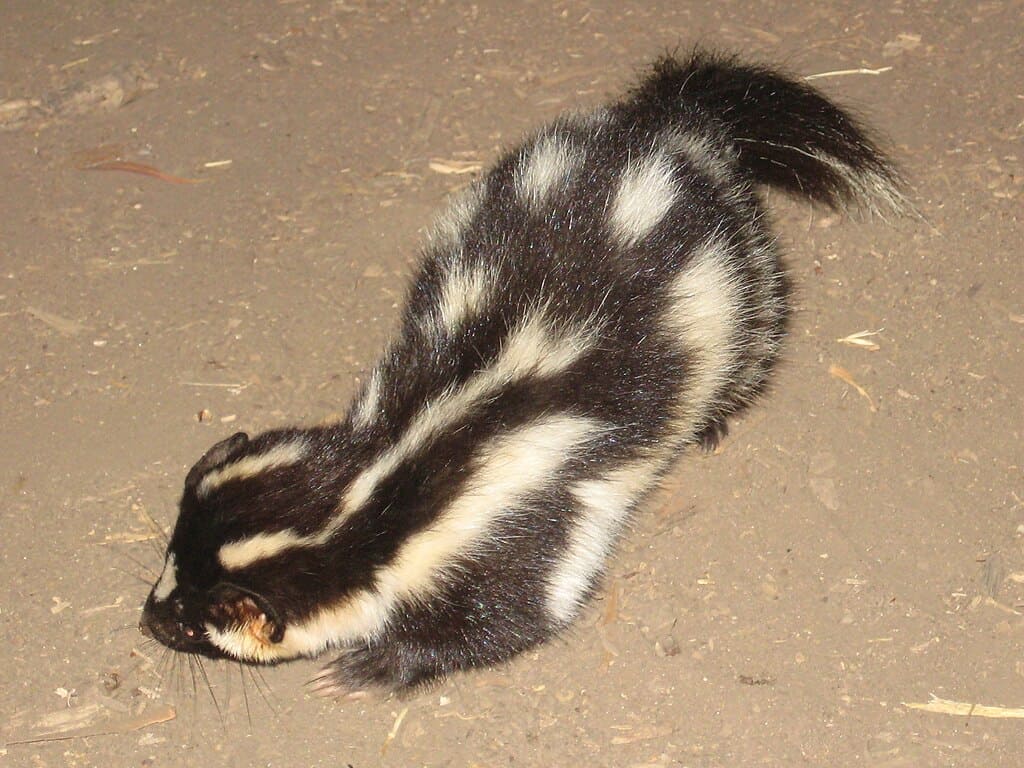
Scientifically named Spilogale Gracilis, the western spotted skunk’s fur is glossy black and has white spots. These smelliest nocturnal animals are small and slender and feature a fluffy black tail with a white underside and tip. Western spotted skunks, like striped skunks, spray a noxious oily secretion whenever they feel threatened.
30. Dekay’s Brown Snake
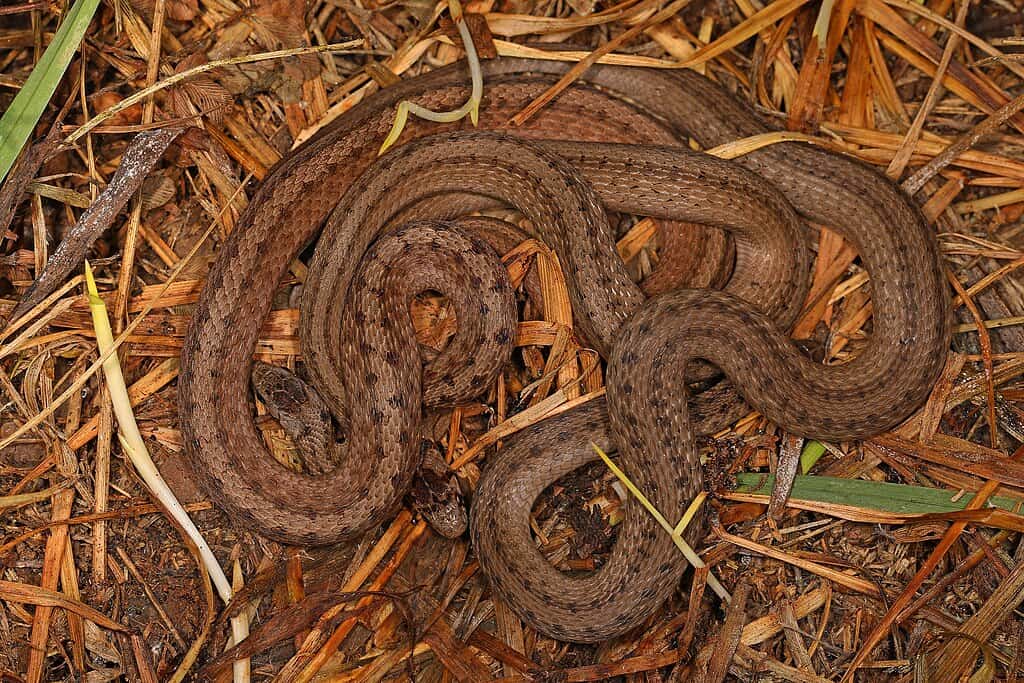
Scientifically named Storeria Dekayi, Dekay’s Brown Snakes are found in light brown or gray to dark brown or black coloration with two rows of dark spots down their back. Moreover, they feature a dark streak down their head, and some have a light stripe down the center of their back. Adult Dekay’s brownsnakes can be 6 inches to 13 inches long.
Final Say on the Nocturnal Animals of America
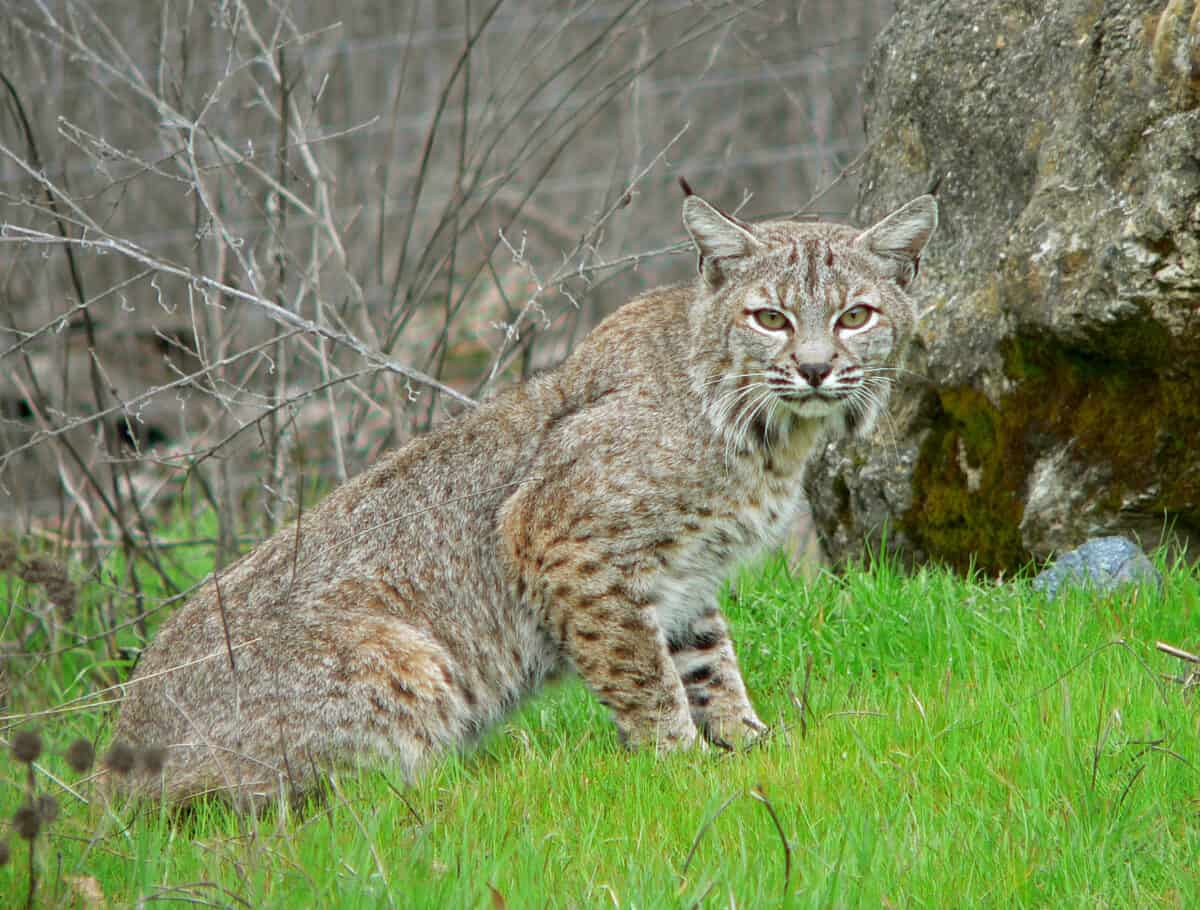
America enjoys a variety of landscapes, from rolling prairies and arid desserts to craggy peaks and tropical rain forests under the sun. However, after dark, the landscape awakens and turns into the playing ground of nocturnal animals of America.
The animals listed above have developed keen hearing, smell, and dark-adapted vision to navigate after dark to prey, mate, escape the day’s heat, or avoid predators. Moreover, naturally, nocturnal animals play a big role in supporting American wildlife and habitat ecosystems.
If you enjoyed learning more about the nocturnal animals of America, you might enjoy these articles:
Join our Forum for free today!

- Surprise Hippo Attack on Three Lions - July 21, 2024
- USA’s Best Wildlife Conservation Success Stories - July 14, 2024
- The Incredible Bird with Sunflower Eyes - July 13, 2024

